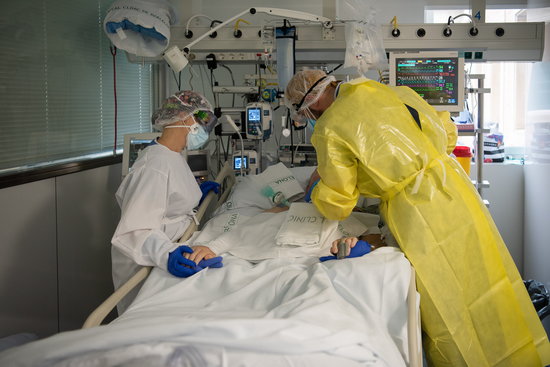How are the three key figures relevant for determining restrictions progressing?
As Catalonia surpasses 300,000 cases, authorities pay close attention to the transmission rate, the number of ICU patients, and daily diagnoses

The latest Covid-19 figures show continued improvement of the pandemic after a dramatic worsening situation in October which led to enhanced restrictions to face the second wave.
The closure of Catalonia's borders, bars, gyms, cultural venues is expected to be in force until late November, as well as a weekend partial lockdown and other measures to reduce the social interactions such as a curfew between 10pm and 6am.
The Catalan government extended the curfew until November 23 last week and is expected to keep the rest of the measures at least until November 27.
But what are the figures authorities want to see before easing the limitations?
Speaking in parliament on November 4, acting president Pere Aragonès explained that the cabinet targets keeping the transmission rate – that is, the number of people infected by every person diagnosed with Covid-19 – below 1, as well as bringing the number of daily infections below 1,000 and reducing the number of Covid-19 patients in ICUs to less than 300.
Transmission rate
The government wants to see the transmission rate continuously below 1.
As of November 11, the figure is at 0.88 and has been under 1 for eight days in a row.
Earlier this week, health officials stated that they want to see the positive trend of the past few days continue until the transmission rate reaches 0.8.
Meanwhile, the culture minister, Àngels Ponsa, said on November 11 that concert halls, cinemas and theaters might open in late November "if the transmission rate stays continuously under 0.9."
Daily diagnoses
The daily diagnoses reached 6,000 for several days in late October and early November, thought to mark the peak of the second wave in Catalonia.
One week later, the number of new confirmed cases per day by PCR or epidemiological tests oscillated between 2,000 and 4,000 – a figure still far from the authorities' aim.
Throughout summer, the figures of new diagnoses were kept at around 1,000 until late September, the aim of authorities in order to ease restrictions.
Covid-19 patients in ICUs
The number of patients in ICUs is a key figure for authorities, along with hospitalizations, because a dramatic increase might carry bringing the whole health system to a standstill, like it happened in the spring.
While in the first months of the pandemic the number of people simultaneously using ICUs reached 1,529, the figure has always been far lower than this in the second wave as of November 11, and it seems to be stabilizing just under 600.
Yet, the private centers were brought into public use on November 6 to face the increase of cases.
Catalonia's ICU capacity had been 575 before March, and has been now expanded to between 900 and 1,000.
In the spring, sports venues and others were temporarily adapted to help cope with the health emergency.